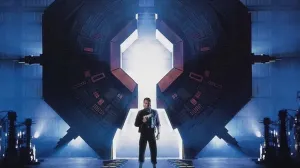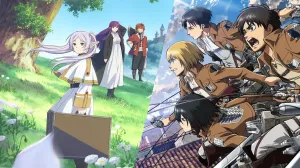
Sometimes exploration in Dungeons & Dragons needs to be approached as a puzzle to be solved. Welcome to D&D 101, a column that answers reader questions about Dungeons & Dragons (and other tabletop games.) We’ll cover everything from game management skills, character builds, and creating memorable campaigns to some of the trickier “social” aspects of the game. If you have a question that you’d like to see answered in a future column, leave us a comment or find me on Twitter at @CHofferCbus and ask me on there!
Videos by ComicBook.com
Last month, we talked about the challenges of exploration in Dungeons & Dragons, a once critical part of the game that has seemingly been neglected by the game’s current Fifth Edition ruleset. Exploration has the potential to be one of the most exciting parts of a D&D session, but its often relegated to a handful of skill checks followed by DM info dump. When presented a certain way, exploration is an opportunity to reward the players for their critical thinking skills and their ability to piece together information in order to advance the story.
Tracking, the act of following a trail left behind by another creature, is one common Dungeons & Dragons activity that can be a lot more exciting and rewarding when it’s treated as more than a mere skill check. Most tracking in D&D games tend to devolve to a player (usually a ranger) asking the DM if there are any tracks to follow, followed by the DM telling the player to make an Wisdom (Survival) check. If the player’s check is successful, the DM will explain that they did find relevant tracks, and the party will follow them to the site of the next encounter. Sometimes, that approach is necessary when a session is under a time crunch, but tracking is a lot more exciting when it becomes a puzzle involving pieces of information that players piece together.
A good way to see how tracking can be turned into a puzzle is to look at how it’s presented in detective stories. Great detectives like Sherlock Holmes can take a single footprint and use it to tell a lot about the person who made it. A deeper indent may indicate the size of the footprint’s maker, while the type of shoeprint might reveal a lot about its makers’ social status or perhaps the neighborhood where they live. A skillful observer can learn a lot from the scantest of visual clues, but it’s up to them how they use all that information.
When a player makes a Wisdom (Survival) check to look for tracks, they are essentially mimicking the same processes that Sherlock Holmes and other fictional detectives use when studying a footprint or another clue. Instead of automatically providing the players with answers for making a single successful skill check, a DM might choose to give them the pieces they need to solve the puzzle instead. When a player finds a track, the DM may want to describe the context clues that the players need to solve the problem put in front of them. Players can use that information how they want, and they can choose to make additional checks (or receive a friendly nudge from the DM) if they need even more context to what they’ve seen.
Another option for DMs is to expand the number of skills used during tracking, giving players a chance to use their proficient abilities to find more pieces of the puzzle. Instead of relying solely on Wisdom (Survival) or Intelligence (Investigation) checks, let players use their Intelligence (Nature), Intelligence (History), or Intelligence (Arcana) checks to search for clues instead. A ranger might be able to locate a check in the woods, but maybe it’s the druid who identifies it as a belonging to an owlbear, the wizard who recognizes that the owlbear is radiating some sort of strange arcane energy, or the player with a Sage background who remembers that there are legends of a Ghost Owlbear that lurks in the area.
One way to make tracking more enjoyable is to present players with multiple tracks and have them figure out which actually belong to their quarry. In a recent session, my players were tracking a Needle Lord (a sentient plant that resembles an evil version of Swamp Thing) through a forest. Instead of having my players make a single Wisdom (Survival) check to track the Needle Lord, they instead came across several clues that could be signs of the Needle Lord. The players had to use the knowledge that they had already obtained about the Needle Lord along with various skill checks to determine whether or not the clue they had found pointed them in the direction of the Needle Lord, or if it was just a red herring. Players could still make skill checks to help provide context and give them more clues, but tracking ultimately came down to choices that the players make instead of the DM giving them the answer. Right choices were rewarded by the players having opportunities to pick off the Needle Lord’s minions, while wrong choices meant risking a random encounter in the woods or perhaps giving the Needle Lord more time to collect resources for its inevitable battle with the player. The players seemed to enjoy this approach to tracking because it put them in the shoes of their characters, and made them feel like their choices ultimately made an impact on what they found in the woods. That’s just one example, but you can also look at skill challenges or other non-traditional methods to supplement your exploration moments in your game.
Ultimately, tracking and other aspects of exploration are what the DM makes of them. A DM can choose to simply give players the answers they need automatically and push the session along, or they can provide clues that help create a more emmersive gaming experience. Let us know about how you’ve tried to spice up exploration in your games in the comment section or find me on Twitter at @CHofferCBus to chat all things Dungeons & Dragons!








